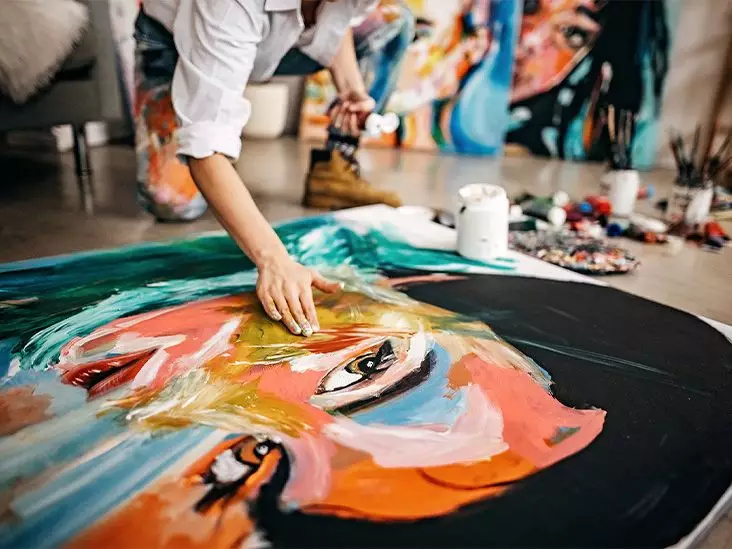Schizophrenia is a debilitating mental disorder that significantly disrupts an individual’s perception of reality, impacting their thoughts, feelings, and behaviors. Those who live with this condition often experience distressing symptoms such as delusions and hallucinations, making it challenging for them to communicate their inner experiences effectively. Traditional treatments, including antipsychotic medications and psychotherapy, play a crucial role in managing symptoms, but there remains a strong need for supplementary therapeutic options. One such option gaining recognition is art therapy, an innovative and effective approach that uses creative expression as a medium for communication and healing.
Art therapy allows individuals to articulate emotions, thoughts, and experiences that might be otherwise lost in translation. For people grappling with schizophrenia, who may find it daunting to express their feelings verbally, the power of visual art can serve as a profound vehicle for self-expression. By transforming their complex and often overwhelming emotional states into visual forms, individuals can foster understanding and connection—not only for themselves but also for their loved ones and mental health professionals.
The intrinsic value of art therapy for those with schizophrenia lies in its ability to bypass linguistic barriers. Many state that creating art helps them put into context the chaotic experiences of their minds. This therapeutic practice encourages clients to visualize hallucinations or delve into emotional realms that are difficult to frames in dialogue. As they engage with various art materials—be it paint, clay, or pencils—participants can often find a grounding force that reduces anxiety and offers an outlet for frustrations.
Moreover, art therapy is a uniquely engaging form of intervention. The act of creating can stimulate cognitive functioning and promote a sense of agency over one’s thoughts and feelings. Notably, the unpredictable nature of art-making can counteract some side effects of psychiatric medications, such as lethargy or disorientation, providing individuals with a refreshing shift in focus.
Through art, individuals can embark on an emotional journey that enhances self-awareness, further inviting a clearer understanding of both their internal world and external realities. The therapeutic relationship between the art therapist and the participant is critical. Therapists guide individuals in navigating their creative processes, offering insight and helping to interpret the meanings behind their artwork. This supportive interaction can lead to improved self-image and emotional health.
While art therapy can be a transformative tool for individuals with schizophrenia, it should not be viewed as a standalone treatment. Rather, it is most effective when incorporated into an integrated treatment plan that includes medication and psychotherapy. Medications such as antipsychotics are essential for managing symptoms, while art therapy can provide a creative avenue for personal expression and emotional relief. In this context, art therapy does not replace traditional methods; instead, it enhances their effectiveness by providing another layer of support.
Additionally, involving family members in art therapy can offer significant advantages. When families engage in expressing their experiences through art, it can foster a deeper understanding of the challenges faced by their loved ones with schizophrenia. Such engagement can facilitate compassion, empathy, and a supportive home environment that encourages ongoing healing.
Art therapy is not limited to individual sessions. Group therapy settings can be particularly beneficial, as they encourage social interaction and the sharing of experiences among participants. In a supportive group environment, individuals can create art that reflects their emotional states, share their stories, and connect with one another. This camaraderie can combat feelings of isolation that often accompany schizophrenia, creating a sense of belongingness and community.
Furthermore, the shared experience of art-making can break down barriers and build bridges, allowing participants to learn from each other and draw strength from their collective journeys. Engaging in these creative group activities not only enhances social skills but also nurtures mutual respect and understanding.
Typically, the costs associated with art therapy sessions can vary based on geographic location, facility type, or whether it is covered by insurance. Those interested in exploring this transformative form of therapy should discuss it with their healthcare providers to find out if it is appropriate for their treatment plans. Professionals can provide referrals or direct individuals to local practitioners or programs that specialize in art therapy.
For individuals with schizophrenia, art therapy can illuminate a path toward healing, resilience, and self-acceptance. By offering an alternative mode of communication, it enables individuals to express the inexpressible and transforms their lived experiences into meaningful creative endeavors. While exploring the rich tapestry of emotions and thoughts through creative expression, art therapy stands out as a beacon of hope in the complex landscape of mental health recovery.

